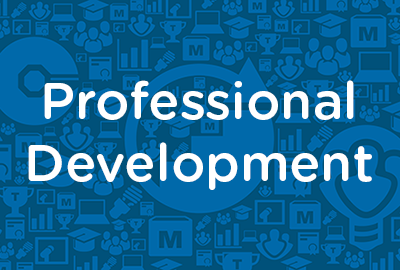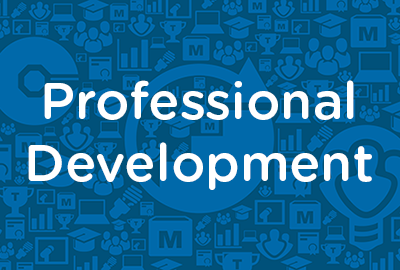 |
Creating Community Collaborations |
2.00 |
Across the country, more and more communities are forming community collaborations to address the out-of-school needs of children and youth of all ages. When different segments of the community join together, share ideas, and pool their resources and efforts to create out-of-school time initiatives, children and youth benefit. What one organization or program may not be able to accomplish alone is often achievable when partnerships and collaborations among diverse groups and individuals are formed.
When school-age care professionals are knowledgeable about what it takes to create and sustain successful collaborations, they can play an important leadership role in creating out-of-school time initiatives and programs that will meet the needs of children and youth in their communities now and in the future. |
 |
Advanced Interpersonal Communication: Customers and Vendors |
0.50 |
Your customers include anyone who uses your company or organization to obtain goods and services. Customers might be internal or external. An internal customer is a member of your organization and can be a supervisor, colleague, or subordinate. An external customer is someone from outside your organization. Each customer is of equal importance, regardless of the amount of business that customer provides to your organization. You should provide the same level of quality goods and services all your customers, and all are equally deserving of efficient and effective communication.
In this course you will learn: to respond to customers’ complaints, and to reject a vendor’s contract without rejecting the vendor, and address a complaint to a vendor. |
 |
Presentation Methods and Debriefing Activities |
2.00 |
There is no "one size fits all" approach to working with children and youth, and this is especially true when it comes to how we present and debrief activities. During this course, participants will understand the importance of the delivery and debriefing of an activity to help children and youth make meaning, as well as some specific methods that can be incorporated into the program right away. |
 |
Becoming Tech Savvy |
1.50 |
This course was designed to help you learn various tips and tricks to use your devices as efficiently as possible. This includes tech skills, safety & security information, and keyboard and mouse shortcuts. |
 |
ALS Airway Response - Part Three |
0.75 |
This final session offers some thoughts on what should be accomplished when attempting to intubate the sickest of patients. This is a brief overview that allows the new ALS provider a chance see what should be learned. Think of this as an opportunity to learn how to assist RSI technicians with what they do.This is a very challenging exam, please take your time. You have two attempts to gain a 70% or higher. Good luck! |
 |
Managing Performance: Performance-Planning Meetings (Instructor Guide) |
1.17 |
In this course you will learn to: identify the steps to conduct an effective performance-planning meeting, identify the process of providing feedback, and identify types of coaching, and document coaching and feedback efforts. |
 |
Lemurs |
2.00 |
In this module, you'll learn about the natural history and conservation of a fascinating group of primates: lemurs. |
 |
Cross-Cultural Business Communication: Workplace Culture |
1.00 |
Culture is a way of life established by a group of people and passed on to succeeding generations. People within a culture usually share common values, beliefs, and perspectives and have the same language and communication style. Although people within a culture must live in close proximity while the culture is being established, future generations frequently relocate to other countries or regions. This creates situations of cross-cultural exchanges.
As we become increasingly diverse, there is a growing demand for cross‑cultural communication in the workplace. Technology allows us to communicate with peers across the globe, as though they were sitting in our offices. Efficient and cost-effective travel makes it possible to communicate face-to-face with clients in other countries. In addition, companies seeking diverse and highly skilled employees find a conglomeration of cultures among them. As a result, employers are emphasizing cross-cultural communication in their own organizations to prepare employees to work with diverse co-workers and clients.
In this course you will learn to: discuss the value of culture and the significance of cross-cultural communication in the workplace, and describe the impact of cultural differences on communication, and avoid miscommunication and conflicts that arise due to these difference. |
 |
Strategic Decision Making: Preparing to Make Decisions |
1.50 |
In this course you will learn to: identify the factors that influence the outcome of a decision, and follow the steps of the decision-making process, define your decisions appropriately by establishing objectives, identify the problems decision frames can present, and the actions you can take to understand decision frames, and identify the guidelines for avoiding the problem of overconfidence, and describe the techniques for managing uncertainty. |
 |
Public School District Board Member Training |
2.50 |
This course is designed to equip you with the knowledge and skills necessary to effectively govern and oversee your district's public schools, promote academic excellence, and ensure fiscal responsibility. It is just one out of many education courses we offer. This course will help you develop new knowledge about students and will help you understand your role. |
 |
Project Management Essentials: Project Scheduling |
1.25 |
This course will focus on how to develop a project schedule by using CPM, PERT, project network diagrams, arrow charting, and Gantt charts and how to dentify the benefits of CPM and PERT, the critical path, and the methods of duration compression. |
 |
Microsoft PowerPoint - Basic: Getting Started |
0.75 |
This course will focus on how to open a presentation, identify PowerPoint interface components, switch between views, and zoom in and out. |
 |
What Every Paraprofessional Needs to Know |
0.75 |
In this course, you will learn what a paraprofessional is. This course goes over various topics that paraprofessionals need to know. There is an emphasis on the instructional paraprofessional that works in the classroom, but this course is designed to educate ALL paraprofessionals. |
 |
Excellence in Service - Advanced: Customer Loyalty |
1.00 |
This course will focus on how to create customer loyalty through dedicated employees and identify the fundamentals of customer loyalty. You will also learn how to understand your customers and make service memorable. |
 |
Budgeting: Operating Budgets |
1.00 |
An operating budget is a projection of the entire income statement of a company, or department. Operating budgets manage the operations of a company or department. They include the expenses associated with manufacturing, selling, and distributing products. Operating budgets also help to administer the daily functioning of the company. They project the expenses a company will incur in its manufacturing facilities, as well as the revenue that it will generate. |
 |
Motivation: Identifying, Planning, and Implementing: Using What You've Learned |
0.50 |
In life, to be a successful, you must have a plan. Napoleon Hill, author of Think and Grow Rich, said, “Create a definite plan for carrying out your desire and begin at once, whether you ready or not, to put this plan into action.” This course has provided you with the information and—we hope—the inspiration to improve your motivational skills and work toward personal success. The final two steps are up to you: You must implement what you have learned and continue to work on improving your skills.
In this course you will learn to: work toward improving your motivational skills by using the 21-day habit and satori, and use resources, including websites and books, to continue working on your motivational skills. |
 |
Interviewing Skills: Following Up (Instructor Guide) |
0.67 |
Once you have conducted the interview, you need to do a follow-up and perform a self-evaluation of your interviewing skills.
In this course you will learn to: complete follow-up tasks after an interview.
This Instructor's Edition of this course includes notes and suggestions to assist you in presenting the material, whether in an in-person classroom setting, or as an instructor-led online or distance-learning course. It also provides you with the answers to questions found in mid-lesson activities, as well as in the quiz that concludes the course. |
 |
Business Problem Solving: Problem-Solving Teams (Instructor Guide) |
1.00 |
Problem-solving teams are created to solve a specific business problem. Ideally, such a team should have members from different departments of your organization. However, you need to develop skills to focus team members on a common goal.
As a team leader, you might be expected to create a team, rather than simply manage a group of people assigned to complete a task. You will play a central role in helping team members interact, communicate, and work together. You will also be expected to plan and execute team meetings. Meetings can be an effective way to communicate information to the group, to decide on an action, to set goals, and to motivate and support team members.
In this course you will learn to: build and manage problem-solving teams and conduct effective meetings, and motivate team members and effectively communicate with them.
This Instructor's Edition of this course includes notes and suggestions to assist you in presenting the material, whether in an in-person classroom setting or as an instructor-led online or distance-learning course. It also provides you with the answers to questions found in mid-lesson activities, as well as in the quiz that concludes the course. |
 |
Business Writing: Formal Proposals |
0.75 |
This course will cover how to create a formal proposal. You will also learn how to add visual elements to a formal proposal, and edit a proposal. |
 |
Searching Online |
0.75 |
This course covers the fundamentals of searching online. From using basic features, such as the homepage and address bar, to using "advanced search" to find very specific information, this course will cover it all. |
 |
Brick by Brick: Assessing the Elderly—Female Cardiac Patient |
1.00 |
We know that there are unique challenges when assessing elderly patients. BLS providers also encounter unique challenges when assessing females for potential cardiac problems. This lesson briefly reviews the BLS assessment skills that are required for both populations. The introduction of 12-lead ECG acquisition gives the BLS provider a chance to orient themselves to the skills necessary when working in a system that requires recording and/or transmission of such tracings. The multiple choice exam is designed to test your knowledge of the material you just reviewed. You have two attempts to gain an 75% or higher on this exam. Please take your time and answer each question carefully. |
 |
Excellence in Service - Advanced: Service Teams |
1.50 |
This course will cover how to implement proper training and empower employees and motivate employees and reinforce desirable behavior in them. You will also learn how to build customer service teams and select the right employees and conduct an interview. |
 |
Budgeting: Reviewing Budgets |
1.00 |
A typical budget contains information for a single year and is updated and revised periodically. Each company creates a budget that fits its unique needs. A budget can be used for many purposes, but its primary functions should be to support strategic goals and to help identify when actual results deviate from what was predicted. |
 |
Coping with Food Allergies in Child Care Spaces (CDA 1) |
2.00 |
A food allergy is a reaction within the body's immune system. It can be anywhere from mild to severe, and in some cases, it may be life-threatening. We must understand the symptoms and triggers of food allergies, the ways to prevent accidental exposure to prohibited foods, how to care for a child experiencing symptoms. This course is designed to be part of a Child Development Associate (CDA) Credential™ curriculum. It covers CDA Subject Area 1: Planning a Safe, Healthy Environment to Invite Learning. This course can also be taken as a stand-alone learning event, or as part of a broader early childhood education curriculum. |
 |
Basic Tech Tools for Paraprofessionals |
1.75 |
uThis course covers basic technology tools for paraprofessionals. It is just one out of many paraprofessional courses we offer. This course is designed to empower paraprofessionals and educators with essential technological skills and tools that can enhance teaching and learning in K-12 classrooms. Participants will learn how to effectively integrate various digital tools, platforms, and applications to improve instruction, communication, and organization. This course will help you develop new knowledge about students and will help you understand what your role as a paraprofessional is. |


























